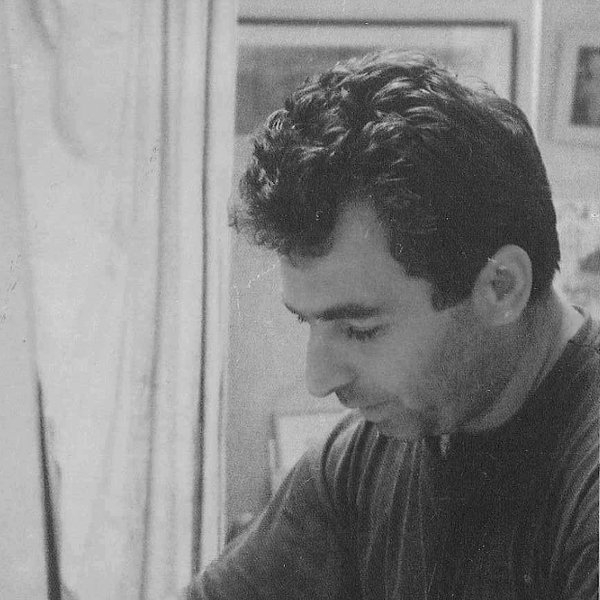He was born in Aegion in 1956, and died in 2003. He studied in the Athens School of Fine Arts (1976-1981) under Yannis Moralis, Yorghos Mavroidis and Dimitris Mytaras. He won the first prize of the “Attico Metro S.A.” competition for the aesthetic improvement of the “Megaro Moussikis” metro station in Athens. Works by him can be found in important private collections.
Panos Fidakis

Solo Exhibitions
2008
Panos Fidakis: Dedicated to a Friend •
Frissiras Museum•
Athens•
2000
Galerie La Hune-Brenner•
Paris•
2000
French Institute •
Piraeus•
1999
Skorpios Art Gallery•
Trikala•
1998
Zoumboulakis Galleries•
Athens•
1998
Ydrotechnon Art Gallery•
Mykonos•
1997
Painting 1976-1996 •
Archaeological Museum •
Aegion•
1997
Melina Merkouri Cultural Centre•
Athens•
1996
Zoumboulakis Galleries•
Athens•
1995
Tyrins Art Gallery•
Karditsa•
1995
Zoumboulakis Galleries•
Athens•
1994
Terracotta Art Gallery (TinT Gallery)•
Thessaloniki•
1993
Ekfrasi – Yianna Grammatopoulou Gallery•
Glyfada•
1992
Kreonidis Gallery•
Athens•
1992
Nafplion Art Gallery•
Nafplion•
1987
Epoches Art Gallery•
Kifissia•
1986
Chyssothemis Art Gallery•
Chalandri•
1985
Cultural Center of Athens, Giorgos Bouzianis Hall•
Athens•
1982
Municipal Library of Aegion•
Aegion•
2008
2000
2000
1999
1998
1998
1997
1997
1996
1995
1995
1994
1993
1992
1992
1987
1986
1985
1982
Press
The Serene Contemplation of Light and Love
“Greece would be a desperately barren land”, writes Tériade in an article, “if it weren’t so densely populated by sky, sea, and light. In Greece, the game of plasticity is revealed totally bare. No intervention disrupts its peaceful journey. The earth leaves the sky free to do what he wants. Naked and secret at the same time, light-hearted or austere, dressed in only her yellowing skin, which is taut, ready to burst, she plays like a conjurer with the pure light…”. The Greek light, unmatched in clarity and sweetness, leads the painter Panos Feidakis into the personal adventure of his images. For the creator, the subject does not make the painting; it is the power and the truth of painting that makes the subject. Thus he observes, calmly and thoughtfully, the world he experiences and feels, and creates images in the measure of real life. Nothing more, nothing less. No metaphysical angst impedes him from fully discovering nature and penetrating its secrets, searching for the cause of his existential identity. Aigio, his birthplace, was the first challenge of his work as a painter, bringing him to the realisation, around 1980, that art was to be the adventure of his lifetime.
From the very first stages of his career, he has used colour to paint with immediacy, without twists and dilemmas, capturing time within his images. He paints the light without fearing its awesome brightness, usually in the hours of the afternoon, from life, revealing the extraordinary images of a familiar world. Girls and boys, mature women and ripe men, landscapes of Kounina, Aigio, Athens, where he has lived and worked since 1975, are the field of his action as an artist, with the purpose of cultivating his painting expression in and of itself. His every brush stroke has its cause, just like every pause between colour and the unpainted surface. His intention is to express the important through the minimum, like in his portraits of the 1990-1993 period, which are characterised by their elliptical nature, emptiness, dissolution, an emphasis on abstract articulations. The creator makes images through the frugality of colours, insisting on shades of ochre, black, white, and blue. This impassioned response to colour is a personal skill of expression, removed from academic teachings, justifying the view of his treasured friend Alecos Fasianos: “His portraits give the impression of a mosaic! They glow”. And he adds, with regards to the rest of his work: “The landscapes [are] peaceful and vivid. The prickly pears look real, the bananas too. Go ahead, Feidakis, along your own path. I believe you have the past and the present inside of you. Everything one requires from the soul to express reality”. And, indeed, Feidakis paints his figures by placing one colour next to another with the rationale of a mosaic, so that the semitones are close together, achieving transparency and imbuing them with life. The structure of his composition is characterised by a remarkable clarity, as he takes no interest in a complex staged rendering. Simply and naturally, he records the images of our world.
“Acropolis”, “Thisseio”, the “House on Asomaton street” served as the impetus for Feidakis to repaint them, in the conscious knowledge of the works that existed before his own personal versions. The world of reality does not change, and he dares to look at the same subjects through his own sensibilities, such as, for example, still lifes like “Angelica in bloom in a glass” and “Freesias in a glass”, as a tribute, perhaps, to that great absentee of Greek painting, Yannis Tsarouchis.
Since 1976, Feidakis has been painting from life, on sheets of paper or small-scale canvases, in oils, crayons or watercolours, insisting on earthly colours. Even his monochrome drawings have the self-sufficiency of a work that will never serve as the study basis for the creation of another. The “Nudes” are also a large thematic series of his work. Nude bodies pulsate with love, like the wonderful poses of “Natasha”, revealing the most innocent versions of pleasure, imbued with emotional tension. The story of the nudes culminates in the 1996 series, where, next to the paintings, he positions models, once again, to check or confirm his ability to convey the breath and the soul of the flesh. Feidakis himself remains, in all stages of his work, a heretic of our day, indifferent to the avant-garde expressions of contemporary art. Passionate and obstinate, he complies with and practices towards conquering the knowledge of the rules and virtues of pure painting, with the intention of revealing his soul.
Takis Mavrotas

